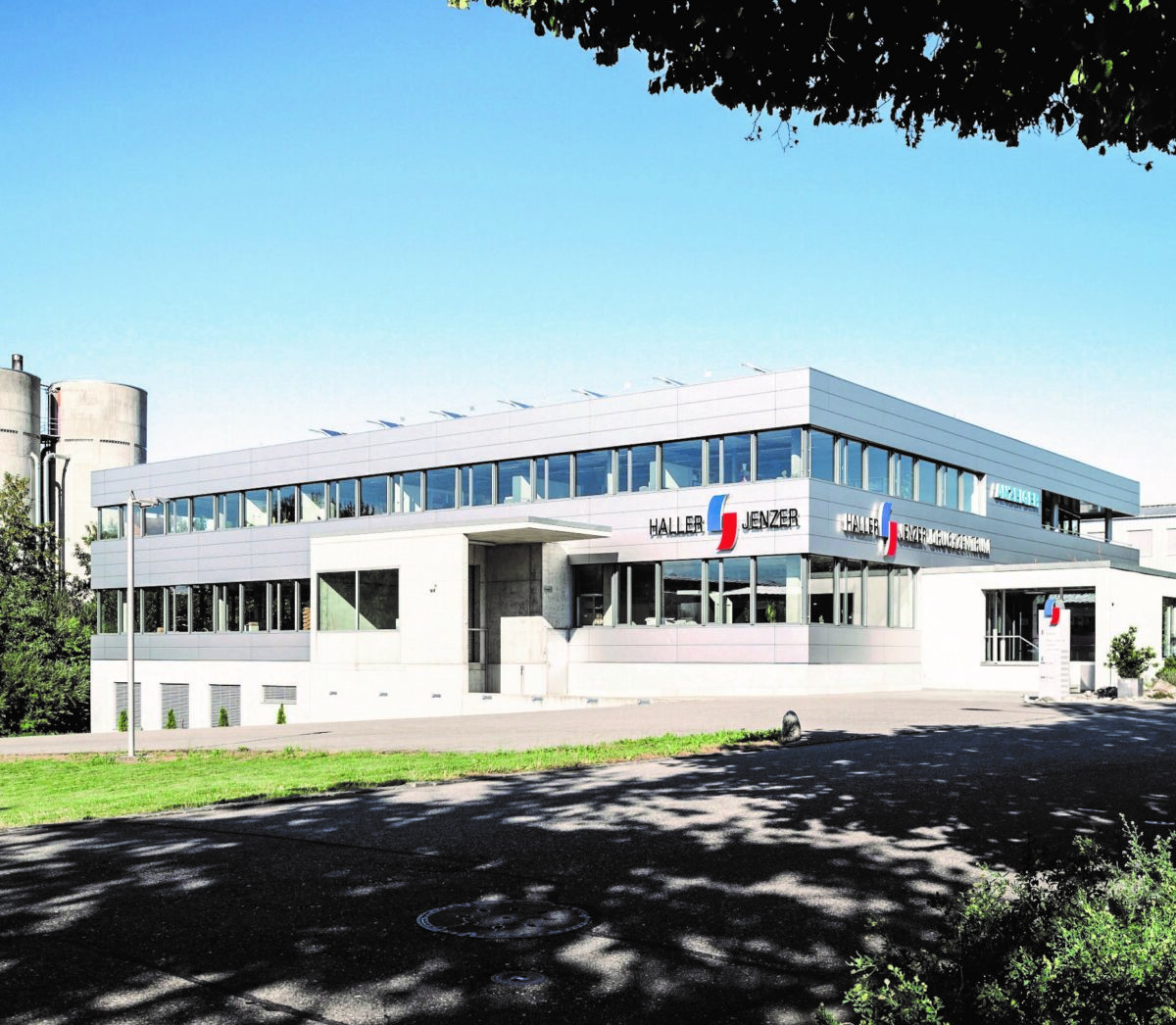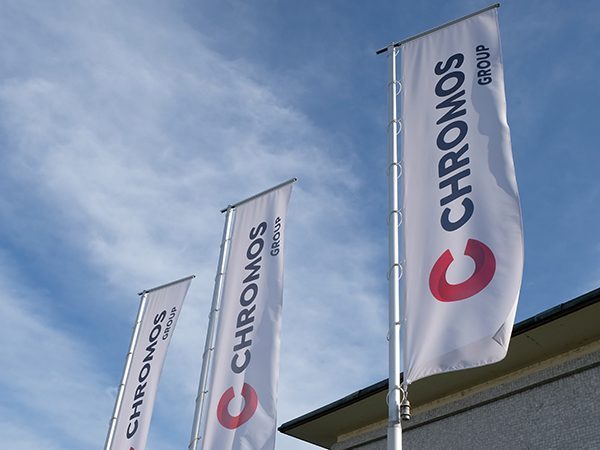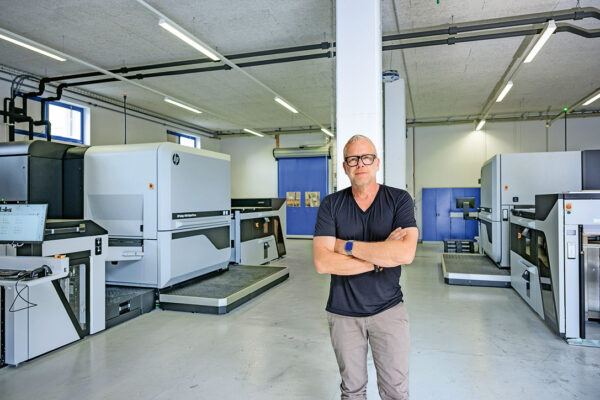René Rüfenacht, Managing Director Production at Haller+Jenzer AG in Burgdorf, has been with the company for over 35 years. In this interview, he talks about technological upheavals, the importance of regional roots, the role of digital printing and why print will remain a credible medium in the future. The reason for the interview is the commissioning of a new CtP platesetter from CRON.
If we have researched correctly, you joined Haller+Jenzer in 1987. Do you remember your first day at work?
I started in the old print shop building in the center of Burgdorf, a venerable old building. When you walked in, you immediately felt the atmosphere: the smell of printing ink, the rattling of the machines and huge letters on the walls. It was very impressive - a whole new world of graphics and communication, although the smells and sounds we hear and smell right now are still the same. Once you have that in your nose and ears, you always feel right at home when you enter another print store.
The importance of typography can still be seen on the walls today.
Absolutely. You should realize that graphic design was and is important to us. Back then, Haller+Jenzer was still fully involved in traditional book printing, typography was a central component, and we cultivated lead typesetting and manual typesetting. This craftsmanship is still very important today - even in a digitalized world, graphics remain an essential aspect of our work and will continue to be so.
How would you describe the development of the industry since then?
The industry has changed enormously. In the past, the focus was on craftsmanship and technology. Today, customers expect complete solutions - from the idea to the design and implementation, including digital solutions.
So Haller+Jenzer has become more than just a traditional print shop?
Exactly. Our aim is to offer communication solutions from A-Z, not just print products, but also digital brochures, websites and corporate design, for example. Our customers should be able to concentrate on their core tasks, while we take care of the entire communication chain - print and digital - and thus take many things off their hands. What we do not cover ourselves, we realize together with proven partners. In this respect, the term "general contractor" is entirely appropriate.
Your company has existed since 1879. What does this long history mean to you?
It is a great responsibility. The print shop has long been associated with newspaper printing, in particular with the Burgdorfer Tagblatt, but new areas of activity have constantly been added. The move to the Buchmatt site was at some point a necessary step to drive growth and development forward. This opened an important new chapter. Today, we consciously want to be perceived as a modern media center and look back with pride on our long company history.
How important is it for Haller+Jenzer to be rooted in the region?
Very important. The majority of our employees come from the region, and we clearly see ourselves as a service provider with regional roots. For us, however, tradition does not mean standing still - on the contrary: we combine our values with modern technology and new services in order to remain fit for the future, while remaining "shirt-sleeved".
In your opinion, what have been the biggest challenges of the last 10 to 15 years?
Clearly the technological change. I originally started out as a typographer - the work was completely different then. Today, many processes are digital, and that requires constant adaptation. Many of our employees have been with the company for a very long time, which is very important to us. Taking them along on this journey and constantly familiarizing them with new technologies is a challenge. Demanding, but necessary, as we want to develop together with our employees. The market has also changed massively. We used to compete with other print shops in the area. Today, competitors come from abroad, often with online offerings, and there is often no transparency as to where production takes place - neither for us nor for our customers.
How do you deal with this new competitive situation?
We consciously focus on our regional roots. Our customers know where we are, can drop by spontaneously and talk to us. This proximity and transparency is an important advantage. Nevertheless, we are of course also noticing the price pressure - especially from online providers with aggressive conditions. Another issue is the change in consumer behavior. Our customers are also under pressure and are cutting back on marketing, reducing mailings or eliminating them altogether. In the long term, this can be counterproductive, but in the short term, savings are often made where the effect is not immediately visible.
Do you also support your customers in their change processes?
Yes, that is an essential part of our work. We support our customers in finding communication solutions - whether printed, digital or in combination. Precisely because we are more than just a print shop, we can combine different channels and develop suitable concepts. In this respect, it is a transformation process in which we closely support our customers.
Has the role of printing also changed in your daily work?
Definitely. Printing used to be the end product. Today, our work starts much earlier - with the consultation, the concept, the design. By the time we receive the print-ready PDF file, it is often too late to exert any meaningful influence. That's why we focus on early involvement in the process and also have a corresponding range of services.
And how do you experience technological change internally - is it perceived more as an opportunity or a threat?
We try to see it as an opportunity. Young employees in particular often take the use of new technologies for granted - keyword AI or automation. This is also applied in our day-to-day work. It is certainly more challenging for long-standing employees who have had a different training. But here, too, we see that openness and a willingness to learn can make a big difference.
Speaking of change, let's talk about developments in offset printing. Haller+Jenzer recently invested in a new CtP platesetter from Cron. What was the decisive factor in this decision?
The decisive factor for us was to have a reliable partner who was able to offer the quality of service that we expect as a customer. We have had mixed experiences in the past. Such a system is not as complex per se as digital printing, for example, and it simply has to run.
Our research has shown that Chromos has an extremely stable system on the market with Cron. We like that, because a CtP system like this is a tool that should not generate additional work during operation. Another decisive factor was how quickly such a new system can be introduced. Our employees had been used to a different system for years, and its simplicity and user-friendliness were a big plus.
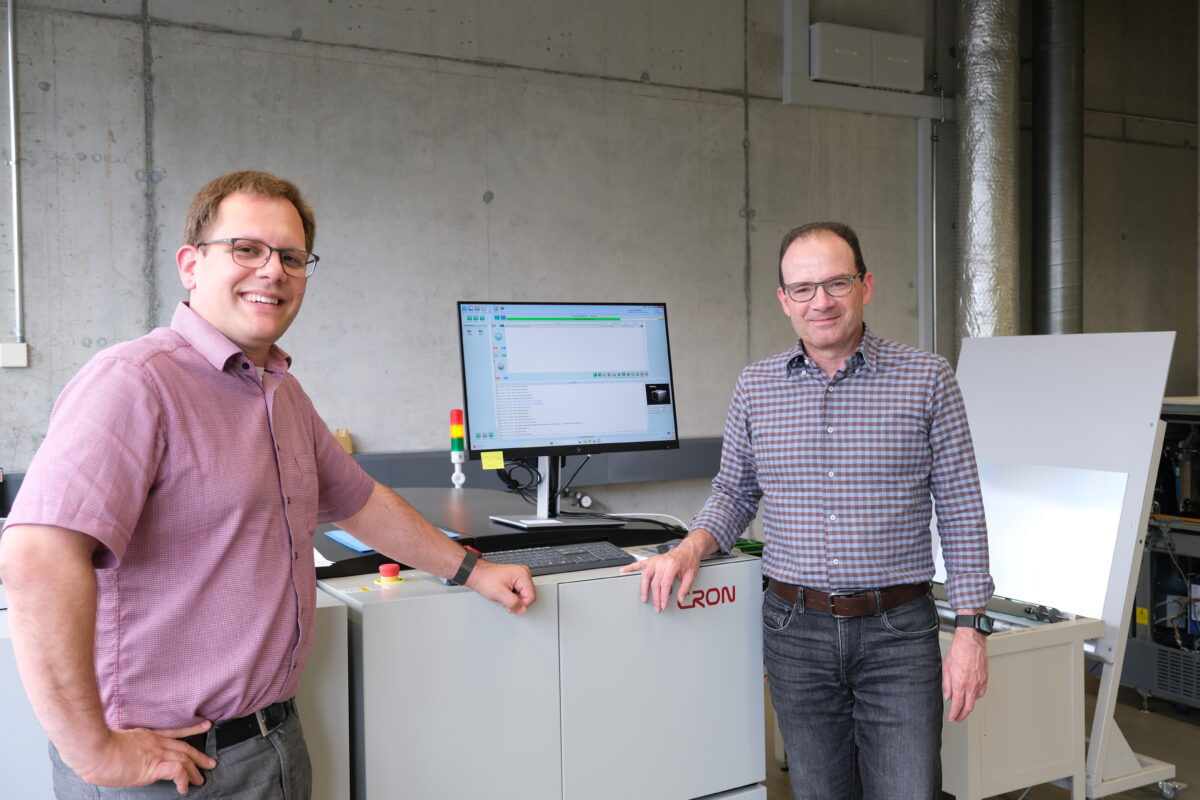
Of course, the economic side of the investment was also an issue. We are looking for a long-term partnership and want to enjoy this solution for a long time. Of course, we can't make this overall calculation yet, but so far our decision has been confirmed. Last but not least, it is also the "being in good hands" that we feel with Chromos, which has been a good fit from the outset. Other providers are a little less close and at some point you realize that certain decisions that are made from a distance have consequences for us that we don't consider to be optimal. We have confidence in Chromos that this is different, not least when you see how long Chromos has been on the market.
How have you perceived Chromos in recent years? It is not the case that we act as a supplier in all production areas.
There were certainly times when other companies were much louder and we had Chromos a little less on our radar. But maybe we didn't look at it properly, because there wasn't always a need for it. But the first step has been taken with the imagesetter. We have been using processless printing plates for around five years, which gives us more flexibility and sustainability. Our new CRON CtP platesetter also provides excellent support. Offset remains central for certain applications, but the volume of digital printing is growing continuously - especially for short runs, mailings and personalized products.
What has changed on the workflow side with the introduction of the new imagesetter?
We are currently testing processless printing plates from Fujifilm, which we probably wouldn't have done without the new platesetter. Our printers are absolutely happy with the new plates and we were also pleasantly surprised at how quickly it was possible to switch from one type of plate to another. We now have a backup with the Fujifilm plates and we will see how this develops.
How long have you been using processless printing plates?
We have been using processless printing plates for around five years, so we are certainly one of the early adopters. This is certainly due to the fact that we take care of the environment in our company, especially where we can influence it ourselves. The use of chemicals in plate development has always bothered us, hence the change.
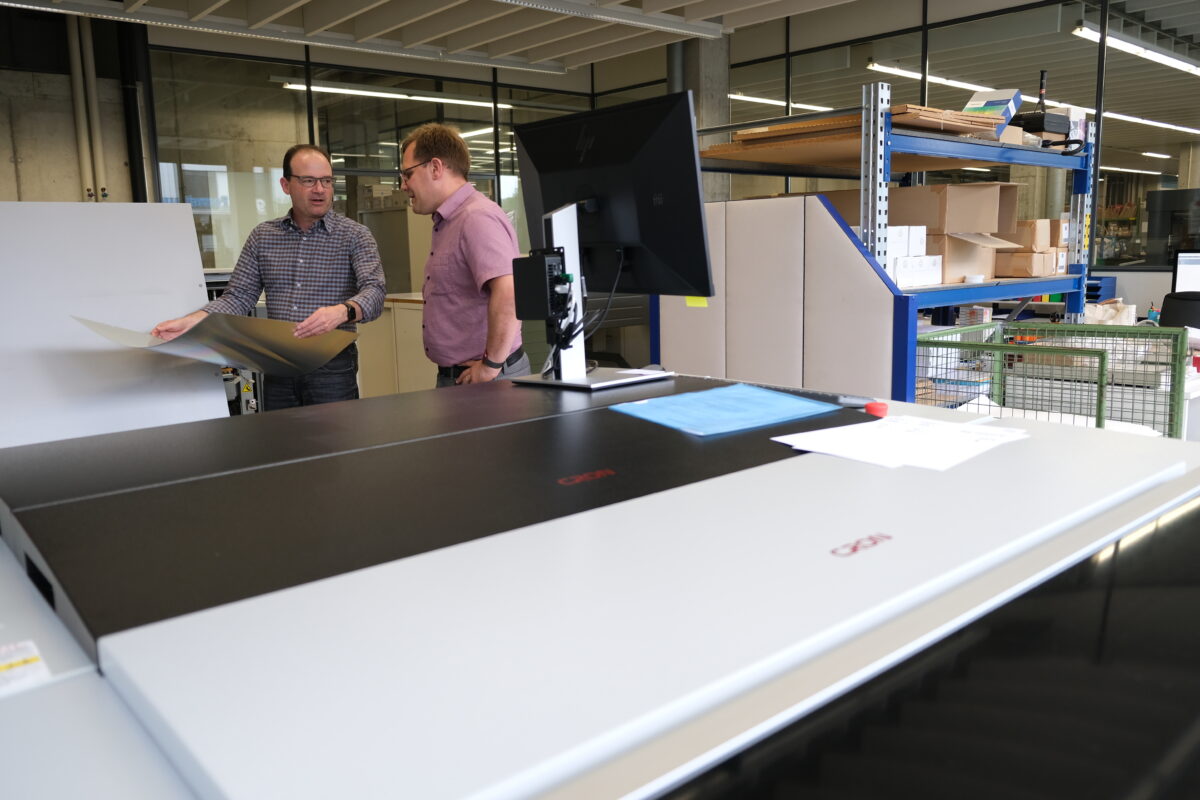
In addition to conventional offset printing, they have also been using digital printing for around 20 years. Both technologies need to be fully utilized. How do you see this development?
In all the years that we have been using digital printing technologies, we have seen a steady increase in order volumes. Digital printing is currently very well utilized and we expect the proportion to continue to rise. For us, this is an important indicator for future investment decisions. When we make new investments, for example in the small offset sector, it will clearly be digital. The only question is whether we rely on toner systems or switch directly to inkjet. We want to continue to be able to act quickly and flexibly, even with special inks, and that will certainly influence an investment decision. In general, digital printing will certainly be a very high priority for new investments in the printing sector.
Is the high capacity utilization of digital printing more due to the fact that it can be used to complete jobs that would not be feasible conventionally, or because the required print runs are shorter?
Both are the case. The need for customization and variable data has increased significantly. At the same time, print runs are being split up more in terms of time, i.e. fewer large orders and more smaller ones, which are then also customized. For the client, the actual printing technology plays a subordinate role; he wants a good print product at a fair price and at a time that he specifies.
Are you observing a growing interest among your customers in topics such as individualization and sustainability?
Yes, definitely, although many customers are still not even aware of the possibilities offered by digital printing - for example in the area of personalization or targeted mailings. There is still a lot of potential here and we are sometimes amazed at how little consideration is still given to these possibilities by creative departments. As far as sustainability is concerned: yes, it plays a role - although often only as long as it doesn't cost extra. There is also a certain amount of misinformation: paper is often wrongly considered to be less environmentally friendly, even though it is a natural raw material. The public perception of the digital world is that it is cleaner - but the energy consumption of data centers is often forgotten.
How do you deal with these perceptions?
We try to educate people - for example about the advantages of recycled paper or the energy efficiency of modern printing processes. But it is sometimes difficult because the loudest voices are often not the most well-founded. We have to be very diplomatic and fact-based in our advice.
Related to this, how high is the proportion of clients from the creative industry?
I would say that around 25% of our customers come from the creative sector. This target group is usually tech-savvy and open to new possibilities, which makes working together very pleasant.
Apart from technology - what are the biggest challenges you are currently facing?
The shortage of skilled workers is certainly one of the most pressing issues. The graphic arts industry is no longer particularly popular with young people. Our aim will continue to be to offer top services in the future, and this is primarily based on well-trained specialists. This is still somewhat easier in prepress and media production, but is increasingly a challenge in printing and finishing. That's why we invest heavily in training and try to integrate people with a refugee background or career changers through internships, for example. We have had good experiences with this. Flexibility is crucial here - our people are increasingly taking on several areas of responsibility. This makes us more adaptable, but it also requires motivation and openness to develop further and expand your own knowledge rucksack.
What do you expect from your suppliers today and in the future - not least in the context of the challenges discussed?
Flexibility and forward thinking. We value partners who draw our attention to innovations before they become standard. Not just reactive support, but genuine advice. At best, a supplier is half a step ahead - just as we want to be for our customers. The market is changing and we expect the same adaptability from our suppliers that we impose on ourselves.
If you were to look ten years into the future and then back - how would you describe that time?
Probably quite short, in the sense that time has passed quickly. We are already experiencing this today when we think back ten years. I hope that we will still be able to say that in ten years' time: We have held our own as a company, despite all the upheavals. A lot will have happened - technologically, socially and economically. Looking back, we will probably say "How could we have done it this way ten years ago".
We will certainly continue to offer services that we do not yet know we will offer. One thing is certain for me: print will continue to exist. Perhaps not as widely as before, but as a valuable, credible medium. Something that people like to pick up, that slows things down and creates trust, to a certain extent as a counterpart to the even more rapidly advancing world of communication, and with a high level of value and credibility.
That is a very fitting conclusion to our conversation. Thank you for the insights and good luck for the future.
Find out more about our pre-press solutions:
Contact us
Do you need to renew your CtP? Our experts will be happy to help you.
